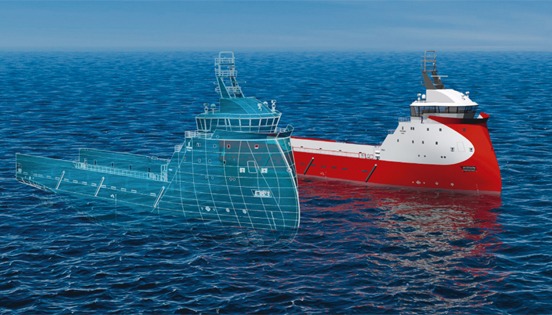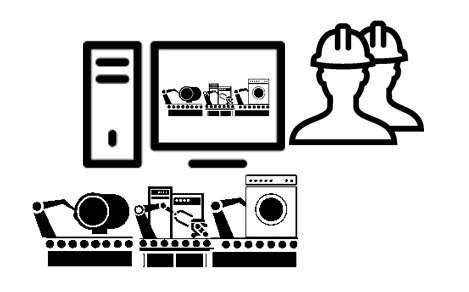Along with Cyber-Physical Systems, Big Data, Cloud, Analytics, and other Industrie 4.0 and Industrial Internet of Things buzzwords is the concept of Digital Twin. Maybe Digital Twin is from Industrie 4.0 and not IIoT?
Here is a definition of Digital Twin from Wikipedia: “Digital twins refer to computerized companions of physical assets that can be used for various purposes.” I saw another definition as “a virtual image of your asset, maintained throughout the lifecycle and easily accessible at any time.” Here’s a picture representing that:
The macro digital twin is made up of micro digital twins. More easily visualized in a production line. The production line has a digital twin; each machine has a digital twin; the machines’ components have digital twins; the machines’ components’ components have digital twins. So, pictured more from the manufacturing arena:
The virtual ship is a fancy interpretation of “Digital Twins.” But I think some concepts more closely-related to PROFINET and automation also qualify as digital twins: HMI, FDI, and even GSD.
HMI. HMIs definitely provide a digital twin of a production line. Not just a pictorial representation. Furthermore, the HMI represents the line in real time. Pressures and temperatures are displayed. Switch positions are displayed. Alarms are displayed. Trends are displayed. And that’s just the overview screen. Additional screens drill down into individual machines and their components.
FDI. This technology that integrates EDD and DTM/FDT approaches to asset management and configuration information also provides digital twins. But in a definite-purpose way; that is, configuration and diagnostic twins.
GSD. The PROFINET and PROFIBUS GSD files have always been a digital representation of the physical devices. They describe what hardware is present and what can be done with it. What types of I/O are in there. What values can they hold. What alarms can they present.
PROFINET and PROFIBUS have used digital twins for years; we just didn’t call them digital twins (until now).
–Carl Henning


